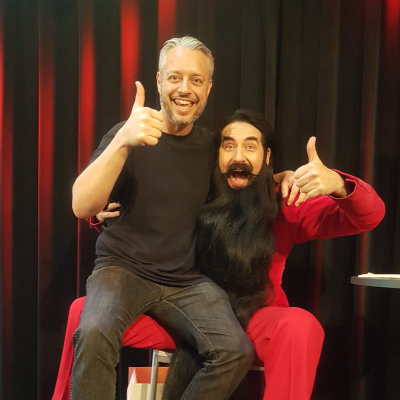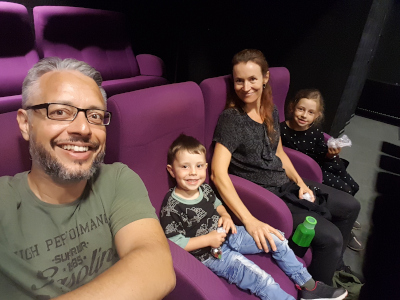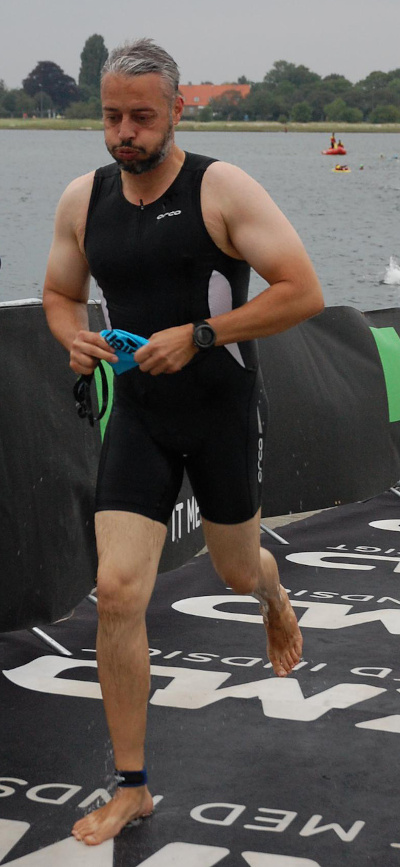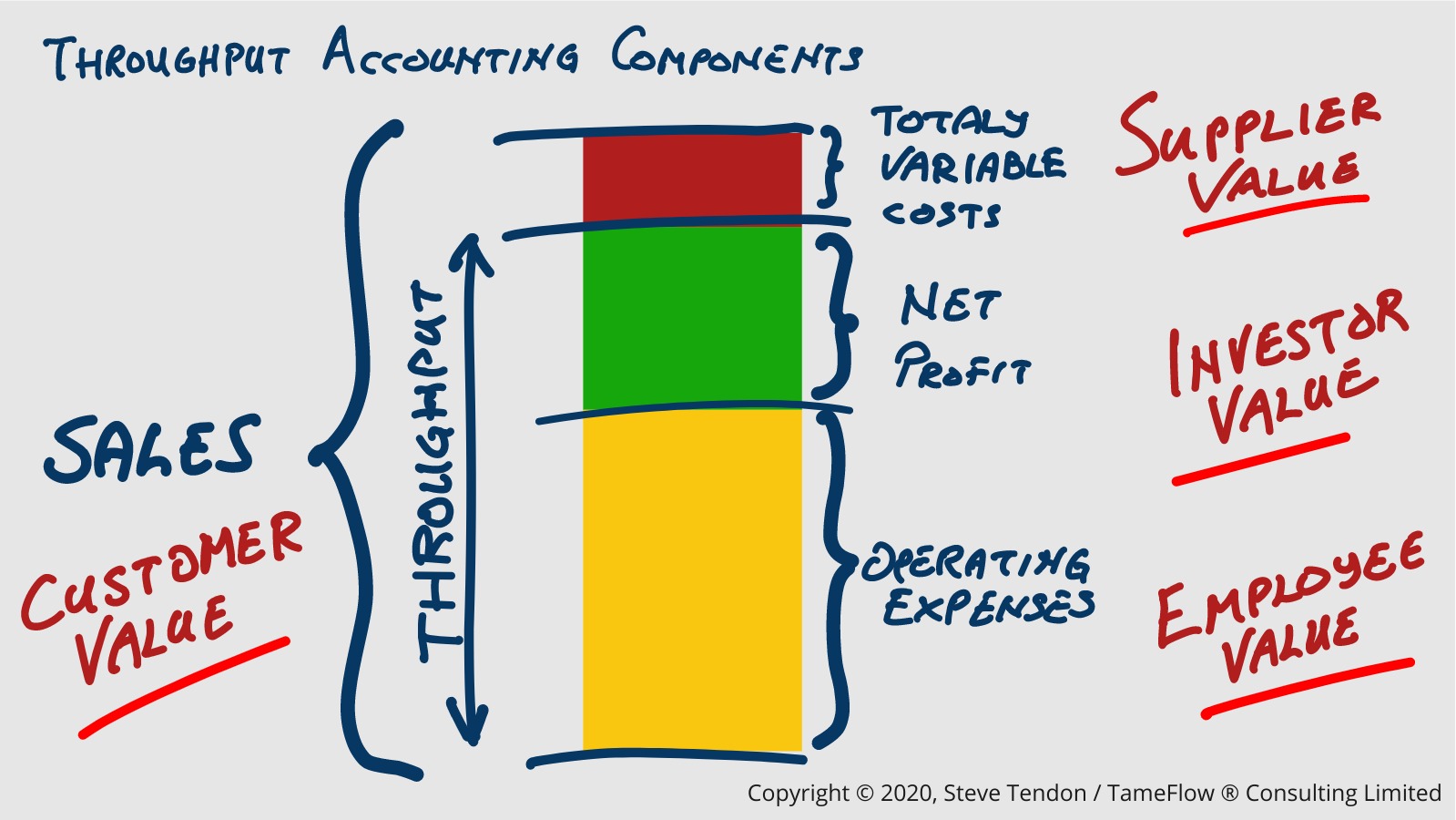Here is today’s episode of the “Campfire Talks with Herbie”.
TameFlow Community Member: Mark Jørgensen Chaudhry
![]()
Name (and Company/Affiliation if desired)
Mark J. Chaudhry ( Stuck On An Escalator / Growing Human )
Who are you?
Who am I? That seems like a fairly philosophical question (to quote Michael Küsters). I have a sentence that I use as a tool to somehow keep me focused on what I find meaningful in life: “To Trust and Inspire Human Beings so that they may Grow to Live their Purpose”.
I find that trust is foundational in all human relationships - so I deliberately try to always assume the best intentions from others and to trust them by default. Not naively and with my life – but at least a little bit. Basically that means that I strive to refrain from what I think is negative thought patterns of looking for hidden agendas / motives from others. This is a deliberate choice. I might get disappointed – but I would rather be disappointed than not be open to listening to others – since this might result in me not wanting to collaborate with them.
I hope that my thinking is reflected in my behavior – so others will trust me too – and continuously strive to be at their best; learning, growing and living meaningful lives as created by themselves.
I consider myself fairly agnostic and pragmatic in the widest possible term and I use this way of thinking and engaging with others in life (no “artificial” separation between “work life” and “private life”). Since a lot of us spend a huge amount of time working – this must be meaningful to us – so we can experience a large amount of psychological flow – or plainly “happiness” – in life.
In a professional context I am concerned with utilizing / communicating / co-creating and practicing philosophy, values, psychology / motivation, mental models / mindset as leadership / management tools for optimal organizational collaboration (starting at the individual human level). It seems to me that TameFlow as an idea / concept is an attempt at a holistic, simple, lightweight, powerful and pragmatic approach for collaboration in organizations utilizing lessons learned from many management practices. Hence my interest in learning and contributing in this community.
Be warned: I pledge to watch out for dogmatism and flawed advice which I believe any community risks falling victim to :). It is all too easy to fall into the slightly arrogant trap of believing: “… I have the answer and solutions for anything and everything…”. Hence I like to have my mental models challenged and to continuously refine them via practice.
How did you get involved with Agile, Coaching, Organizational Performance - and in particular with TameFlow?
I have ever since I can remember been fascinated with why we do what we do as human beings. What drives us? What motivates us? Why do we behave how we do? What makes us happy? Some would label this “philosophy” and “psychology” and a lot of other terms. Due to this fascination I have studied these subjects explicitly in my education (which have in all cases been a combination of theory and practice – which should in essence be the same – since I personally do not see much meaning in theory that we cannot utilize in practice and continuously improve according to our context).

I slid into so-called “agile coaching” via a path through various startups I founded and co-founded over a 15+ years time span. These startups revolved around delivering services / consulting in a cross domain of marketing (offline and online) and IT; specializing in usability / user experience and web design / development.
Later I added “consulting services” more specific to market testing utilizing concepts such as Pretotyping, Lean Startup and more to answer questions such as: “… will our (existing and/or potential) customers buy / pay for our services – and how much will they pay …” before investing too much time and money and risking slow market failure. I have driven in this customer obsessed mindset in startups and large enterprises as an entrepreneur / intrapreneur and coach / mentor / change agent / adviser and I continue to do so.
It is extremely important for me to help others learn from my mistakes since I have experienced myself too often (such is life) to be attacked by “The Beast of Failure”. Among other personal experiences I at one point felt compelled to (way too late as a “slow failure”) close down a company resulting in an economic debt of 50,000 Euros (which was a fairly substantial amount of money for a younger version of myself some 20 years or so ago). I strive to help others only scrape their knees and not lose a leg in their learning journeys.
Along my personal journey I had “aha” moments related to “agile, Scrum, XP” and “Pretotyping and Lean Startup”. I am very grateful to especially Alberto Savoia for his passion in terms of the ideas / concept relating to Pretotyping as described in his book The Right It: Why So Many Ideas Fail and How to Make Sure Yours Succeed – and for Alberto’s responsiveness to my curious questions.
Are you currently (or do you intend) making a living in this sector? And with TameFlow?
I currently work professionally in the innovation mix of understanding and satisfying customer needs integrated with defining and pursuing desired business outcomes.
As previously mentioned I consider myself curious, agnostic and pragmatic and therefore I utilize a wide range of” tools” such as lean, kanban, agile, Scrum, XP, DevOps and Nexus and SAFe for if it is meaningful to “scale” (needed to coordinate work between many colleagues and external partners). I also utilize and take inspiration from other frameworks such as PMBOK, ITSM and so forth. I find that elements from various bodies of knowledge can come in handy by understanding and deliberately applying these elements as tools for “collaborative and strategic problem solving”.

I am now in the role of so-called “agile coach” – where I think a better term is probably “agnostic innovation coach” or something equally obscure :). I find the term “agile” too narrow since I take inspiration from many management practices where we might argue that “…we stand on the shoulders of giants…” (we should in my view understand and not forget previous lessons learned by others). Why am I labelled “agile” when I also practice and promote “lean” (as an example)? I do not enjoy being labelled and put into a box. I much prefer being on the edge of the box or outside the box :). Hence I strive not to label and judge others and put them into “neat” boxes.
TameFlow is my latest interest and addition to my “toolbox”, and I am already trying some of the concepts out. Some elements in TameFlow I know quite well from experience / practice. Some not so much. I am curious. Thank you to Michael Küsters for pointing me in this direction – and Daniel Dorion and Steve Tendon for the warm welcome – and to Minton Brooks for pointing me to Agnostic Agile.
Give us a typical day in your life!
I typically rise and shine at 06:30. Then I step on the scale (I use my weight and/or body mass index) as a leading indicator and a reminder of whether I am eating healthy enough (and how much) versus my physical and mental exercises. I like metrics and data and to “say it with numbers” to measure the current situation and progress towards desired outcomes :).

For breakfast I almost always have two glasses of water, a single cup of black coffee and eggs as an often used ingredient.
After breakfast – on regular working days – my wife or I take our children to kindergarten and school – and I try to get a bit of time boxed exercise (I periodically struggle with sustaining this habit) and then I start working.
No workday is ever the same since I support a lot of colleagues. So I strive to keep my calendar mostly open to be available if anyone wants some dialogue / help (on average I have approximately 20% “things” planned in my calendar and 80% “open for whatever” in my calendar).
I currently directly support a portfolio that can be considered a PEST environment including 5 Agile Release Trains (using SAFe terminology) and collaborate on company / group wide transformational efforts spanning all business areas.
On a more strategic note I drive in a customer obsessed mindset and various performance flows (using the TameFlow terminology); essentially all four flows on a portfolio and agile release train level (SAFe terminology).
In the evenings before I go to sleep I take a few minutes to think about what matters to me and to reflect. So here I think about my children and my wife, my wider family and friends – and exciting stuff at work. The last part is deliberate because I find this helps me in creative problem solving (oftentimes I wake up in the morning and have maybe subconsciously processed some challenges and come up with ideas on how to potentially tackle them). If that is the case then I hurry to write down some notes for later possible action (linking to my morning routine). Maybe this is why some say that “…we should sleep on it?” We can probably call this an iterative and incremental daily process for learning / growth.
What makes you happy at the end of a day?
Thinking and being thankful for having my children, wife, brother, mother, father, wife and others I interact with including my colleagues at work as part of my life.

I strive to think of my colleagues and others I engage with as family; as brothers and sisters; as others (human beings) with hopes and dreams. If your child behaves in a way that you – for some reason – do not like – will you put them up for adoption? In extension if your colleagues do not talk and behave according to your liking (no matter their organizational role) – would you fire them or recommend them getting fired – or think bad things about them ? Or? I would not / I do not (at least I consciously change my thinking when catching myself in the act of thinking bad things about others). Instead I strive to listen and behave with empathy (which is a never-ending journey towards “mastery”). So in essence: Interacting with other human beings makes me happy from the start of the – throughout the day – and at the end of the day. Fortunately I am not a hermit – so it is impossible to not engage with others :).
What’s the most important skill or insight you’ve developed while getting involved with this industry?
Practicing open minded listening for understanding deep meaning from others. Striving to find common ground for mutually beneficial collaboration no matter role, rank or similar (informal organization). Everyone’s view point matters – while ultimately a few likely make the strategic decisions in organizations (formal organization). In other words I listen for mental models, mindsets, paradigms, perspectives, philosophies etc. – including my own (which is why “Tame your Work Flow” caught my interest from the very first pages).
What are the greatest challenges on your path to using/improving the techniques you favor in this sector? Where do you see TameFlow in this?
Combining / spanning multiple mental models to align across an organization (two or more people collaborating to achieve common objectives).
I struggle to always put myself in the shoes of others while taking a systemic view. I believe this is needed for me to promote symbiosis of mental models and behaviours from different viewpoints.
As an example I have casual dialogues with others (e.g. I just had a conversation with a CFO to see if we could both see a connection / symbiosis in what in TameFlow is described as “Operational Flow” and “Financial Flow” and various currently used metrics such as cost/income ratio). I do this to understand their points of views (mental models). I find it very challenging to align especially in large enterprises. One reason is the very large number of colleagues and organizational, functional structures / silos.
What are the greatest rewards you’ve had (personally or professionally) or would like to receive in this industry?
Helping others learn and grow and create meaningful lives for themselves (no separation between what is labelled “work life” and “private life”). I use the term “create” deliberately since I do not believe “the meaning of life” (e.g. “42”) can be found. Rather I believe “the meaning of life” can only be created (by ourselves). So I hope I can contribute a bit for others to be the creators of their own meaningful life (and I can do that in any industry). What motivates me (my greatest reward)? Basically the slightest hint of gratitude from others who convey to me that they find my “services” helpful is the absolutely most powerful drug. I am sort of addicted :). I believe this is why many human beings gravitate towards philanthropy – where the return is “gratitude” on invested time and/or money.
What do you want to learn from a community of peers, like the one here TameFlow Community site?
How TameFlow can be practically applied as a “tool / toolbox” in the organizational contexts I contribute in – in order to always optimize to satisfy external customer needs with the least effort while collaborating with happy colleagues and making a satisfying return on investment (e.g. economic) so the organizations I am part of can keep on maximizing their overall organizational purpose. In essence I hope that TameFlow might be helpful in terms of a healthy balance between three “Conscious Business” bottom lines of: People, Planet and Profit.
What question(s) would you like to ask Steve, or what topics would you like him to develop (in relation to the TameFlow Approach)?
TameFlow is a very interesting idea, concept, proposition. There are an infinite amount of ideas, concepts, propositions for “solving problems”.
Why should I choose to invest my time and money in TameFlow (elevator pitch answer targeted at “enterprise executives”)? :) What exactly makes TameFlow unique in our contemporary world?
Challenging and refining my own mental models is key for me in order to continuously learn, grow and contribute. How can TameFlow be practically applied in transformational work / continuous improvement? How to get buy-in (change management) from CEO and thin sliced through the organization?
Can you provide an example / war story on how you brought TameFlow into a big organization and benefits / outcomes of this compared to the previous situation?
In the Scaled Agile Framework for Lean Enterprises (SAFe) there are a couple of organizational concepts described as “Operational Value Streams” and “Development Value Streams” (https://www.scaledagileframework.com/value-streams/). Given this is a chosen framework in an organization – how could / would you apply the four performance flows for creating a common language and transforming a large organization to move into a “continuous improvement state” (think “linking Operational Flow” and “Financial Flow”)? You probably answered this question many times - while the answer must here accept the organizational context of SAFe being the framework decided for “transformation”. Which “transformational steps” would you take if no-one has ever heard about TameFlow and no-one is interested in yet another framework and solution to solve all our problems? One antipattern being that there are too many “mandatory frameworks” to follow which are not integrated / aligned. I had personally not heard about TameFlow 3 months or so ago.
If other TameFlow enthusiasts want to reach out to you, where do they find you? And what is your TameFlow Community handle?
- www.linkedin.com/in/markchaudhry
- TameFlow Community handle: mark
The below ideas and websites are work in process (is everything not)? :)
- www.growinghuman.org
- www.pretotyping.it
- www.stuckonanescalator.dk
Herbie talks about… How TameFlow looks at Customer Value and Customer Focus
Mark mentioned in his interview that he is “customer obsessed” which brought up the topic of how we consider the customer in the TameFlow Approach.
In TameFlow we do not consider any category of people as more (or less) important than others. In particular for a company, there are at least three categories that must all be happy for the business to properly function. They are, in no particular order:
- The Customers
- The Investors
- The Employees

The three categories exist in a symbiotic relationship, and if any one is not happy, then the business risks… going out of business. The important element in all this is the role of the fundamental variables, or components, of Throughput Accounting. We can clearly see how all interests are tied together:
- The Customer Value is represented by Sales.
- The Investor Value is represented by Net Profit.
- The Employee Value is represented (mostly) by Operating Expenses.
Hence, it is via the equations of Throughput Accounting that we can concretely connect together the interests of the three categories of people, and make sure we structure the corresponding component so that all categories are happy. The business is seen as a three legged stool. If one leg is missing, it will fall. In conclusion, creating Customer Value is necessary but not sufficient for a thriving business. The interests of employees and investors must be satisfied as well.
If you found the topics in the “Campfire Talks with Herbie” interesting, there is much more to learn about them in the Tame your Work Flow, How Dr. Goldratt of “The Goal” would apply the Theory of Constraints to rethink knowledge-work management book.
To ensure you don't miss future episodes of the "Campfire Talks with Herbie", subscribe to receive the email notifications about the upcoming events.
